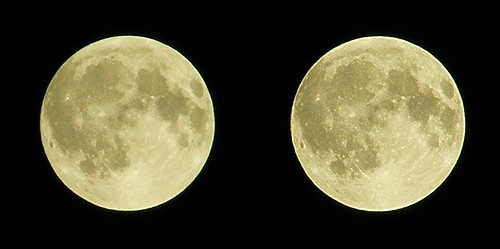I promised my daughter and some friends to write about what I have learned about bisphenyl A (BPA) and I will keep it as brief as I can and still include everything I know. I learned this via Dr. Jane Adams who is a neurotoxicologist at the National Institutes of Health, (NIH).
Back in the mid-90’s, Dr. Adams noticed that it seemed like a lot of urine samples coming into NIH were contaminated with bisphenyl A. So they did a quick study and found that 97 percent of the urine samples coming in, from all ages of people, were contaminated with what were, to her, alarming concentrations of BPA. What is BPA? The chemical bisphenyl A was first synthesized by a German scientist in the 1890s. No use was found for it until the 1930s when it was discovered that BPA made a dandy artificial estrogen. It was used for that for a few years until they discovered DES (diethylstilbestrol) in the late 1930s and BPA was no longer used for estrogen replacement.
Most of you are probably too young to remember what happened with DES. I remember DES and I also remember when the thalidomide nightmare hit. I remember as a 10 year old, reading through LIFE magazine and being totally creeped out by the teratogenic effects of thalidomide. (Teratogenic means “monster making”). Women who were given DES and women who were given thalidomide started giving birth to monsters instead of babies. LIFE Magazine had big black and white photos that I will never forget.
Okay, so when DES was developed in the late 1930s they stopped using BPA for estrogen replacement. Then during WW II and at the dawn of the modern age of plastics and polymers, it was discovered that BPA makes a terrific polymer material. And it truly is terrific, having really no equal still today. You know this plastic as polycarbonate and its trade name Lexan. Polycarbonate is best known as the “bulletproof plastic”, and it is exactly that. It’s not perfectly transparent or even as clear as acrylic but it is clear enough to see through okay if made well, and yes, this is the stuff you may have seen in the TV ads in the 70’s where a guy stands there and empties a .357 magnum at a window made of Lexan. When he shoots at an angle the bullets just bounce off. When he shoots straight on, the bullet gets stuck in the plastic but does not penetrate. Well that demonstration is real, not a trick. Years ago I had a go at a little demonstration at a security show where they had a window made of 1/8th thick Lexan and you were given a 3 pound ball-peen hammer to do your best to break it. People were swinging on that thing all day for three days and nothing happened. The hammer was provided with a wrist strap that they insisted be used because the hammer would bounce back with as much force as you applied! Not expecting this, people would often lose the hammer and they didn’t want a hammer flying across the convention floor.
The windows of the president’s car, some bank teller windows, the Popemobile windows, and all fighter plane canopies are made of Lexan. It takes a steel cored armor piercing bullet to get through Lexan. It’s still the toughest transparent plastic around. You also find it in industrial filter housings, vandal proof light fixtures in schools and prisons, and lots of other places. It’s really cool stuff. And in your daily life you encounter it in those 5 gallon water bottles you set on top of the water cooler, some baby bottles are made from it, and BPA is used to coat the inside of food cans. Polycarbonate (BPA) is a bit on the expensive side so it’s not used unless you really need it. Refillable water bottles and baby bottles are two examples where it’s a good choice. However, you also find bisphenyl A used as a plasticizer in certain uses of cheaper plastics like PVC. Mixed in with PVC, small quantities of BPA improves the feel and quality and makes PVC much “nicer”. So BPA is not everywhere but it is more common than just water bottles, baby bottles, and food cans. And, just because a plastic bottle or other object is marked PVC (in the little recycling triangle on the bottom) does not mean that it contains no BPA. It might contain BPA as a plasticizer and it might not.
That’s all fine and dandy except for one thing. Bisphenyl A leaches / dissolves into the water or food in small amounts and we consume it. This is the source of the BPA that Dr. Adams discovered in urine samples ranging from babies to the elderly. But is it dangerous? Well this is where it gets interesting and a little complicated so read carefully. The teratogenic effects of DES were discovered in rats long before the problem appeared in humans but it was argued that rats and humans are very different, and you cannot make direct comparisons. This is true, more or less. It turned out that to create monsters in humans, the concentration of DES had to be 1,000 times higher than the concentration that causes problems in rats.
DES and BPA both mimic estrogen in the human body and are capable of creating all sorts of problems besides monstrous babies including obesity, heart disease, cancer, mental problems, neural problems and who knows what else. Bisphenyl A creates problems in rats at a concentration even lower than DES. The concentrations of BPA found in humans today is over 1,000 times higher than the concentration of BPA needed to cause problems in rats. Does this mean anything? I don’t know. Nobody else knows either. No proven link to a problem has been found yet in humans but Dr. Adams is concerned because the parallels with DES are striking, to say the least, and the amount of BPA found in humans increases every year. We don’t know all the problems that can occur. It is possible that the epidemic of childhood obesity and unexplained precocious puberty is caused by BPA. It’s possible that BPA is causing mental problems that we have not tracked down to BPA yet. She argues that these chemicals that mimic estrogen are very dangerous things to play with and this one is in general distribution to the public. It’s even found in baby bottles and we really don’t know much about what it might be causing. NIH is just now assembling people to begin to study it, but for the moment it’s up to you to decide whether to be concerned or not. Nothing much is known except the above. The parallels with DES are creepy. You must make your own judgment.
Now if you couldn’t follow the point I’m making above, let me compress it down to a short story:
Around 1930 we developed a chemical which I’ll call Chemical A. Chemical A functions as a synthetic estrogen, an important hormone in humans . Chemical A is found to cause horrible birth defects in rats. Later, we discover the hard way that at a concentration 1,000 times higher it also causes horrible birth defects in humans. Chemical A is banned. Around 1930 we also develop Chemical B. Chemical B is very similar to Chemical A and also serves as a synthetic estrogen. Chemical B also causes horrible birth defects in rats. It turns out that a very useful plastic can be made with Chemical B. Chemical B is thus found all around us in our daily lives. We can’t avoid getting it into our bodies. The concentration of Chemical B in our bodies has now grown to about 1,000 times the concentration that causes birth defects in rats. Harmful effects in humans have not yet been shown. Should we be worried about Chemical B?
Edit: More info has come out that I wrote about in this blog post:
shuttersparks


Recent Comments